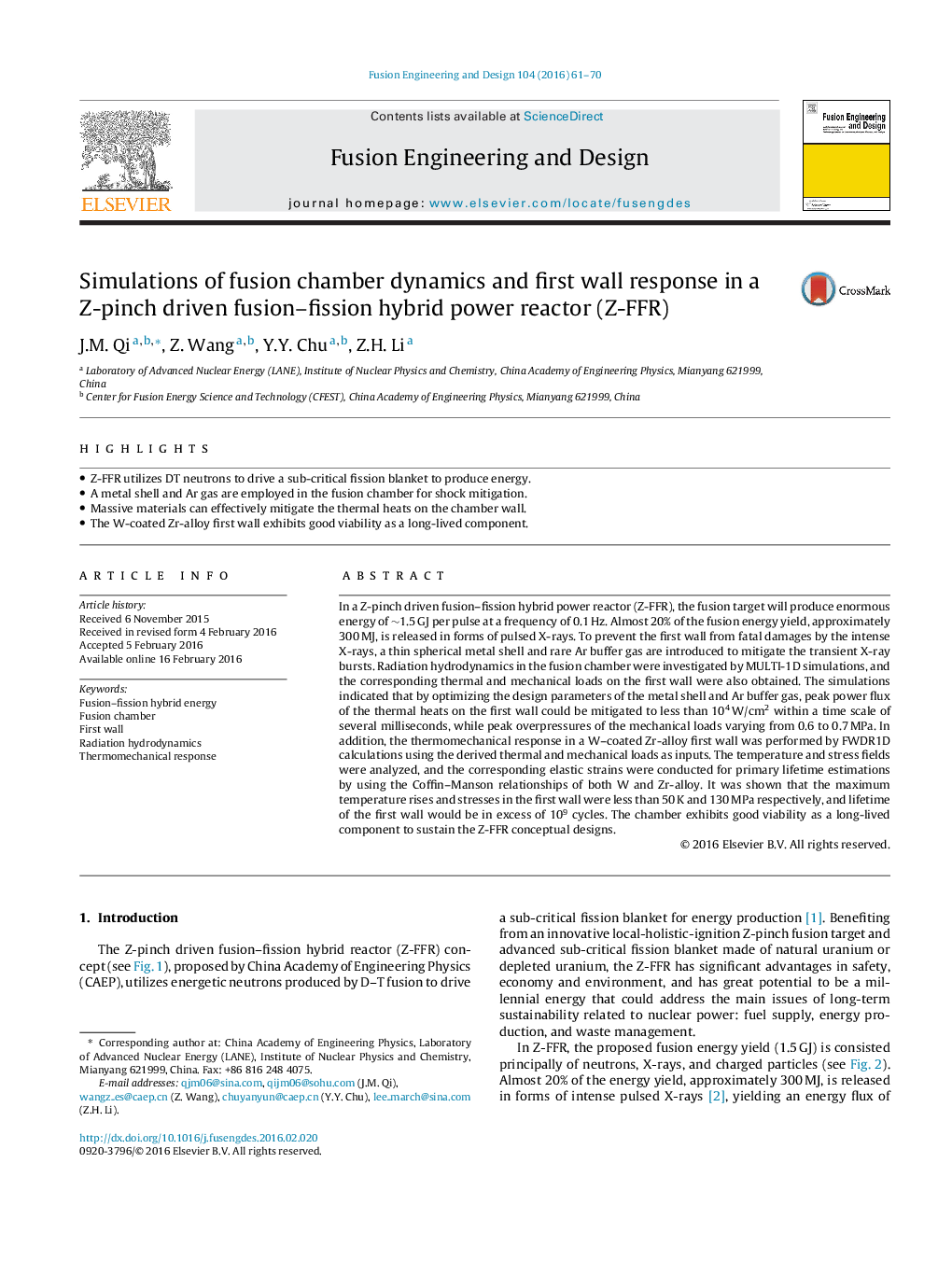| Article ID | Journal | Published Year | Pages | File Type |
|---|---|---|---|---|
| 6745466 | Fusion Engineering and Design | 2016 | 10 Pages |
Abstract
In a Z-pinch driven fusion-fission hybrid power reactor (Z-FFR), the fusion target will produce enormous energy of â¼1.5Â GJ per pulse at a frequency of 0.1Â Hz. Almost 20% of the fusion energy yield, approximately 300Â MJ, is released in forms of pulsed X-rays. To prevent the first wall from fatal damages by the intense X-rays, a thin spherical metal shell and rare Ar buffer gas are introduced to mitigate the transient X-ray bursts. Radiation hydrodynamics in the fusion chamber were investigated by MULTI-1D simulations, and the corresponding thermal and mechanical loads on the first wall were also obtained. The simulations indicated that by optimizing the design parameters of the metal shell and Ar buffer gas, peak power flux of the thermal heats on the first wall could be mitigated to less than 104Â W/cm2 within a time scale of several milliseconds, while peak overpressures of the mechanical loads varying from 0.6 to 0.7Â MPa. In addition, the thermomechanical response in a W-coated Zr-alloy first wall was performed by FWDR1D calculations using the derived thermal and mechanical loads as inputs. The temperature and stress fields were analyzed, and the corresponding elastic strains were conducted for primary lifetime estimations by using the Coffin-Manson relationships of both W and Zr-alloy. It was shown that the maximum temperature rises and stresses in the first wall were less than 50Â K and 130Â MPa respectively, and lifetime of the first wall would be in excess of 109 cycles. The chamber exhibits good viability as a long-lived component to sustain the Z-FFR conceptual designs.
Related Topics
Physical Sciences and Engineering
Energy
Energy Engineering and Power Technology
Authors
J.M. Qi, Z. Wang, Y.Y. Chu, Z.H. Li,
